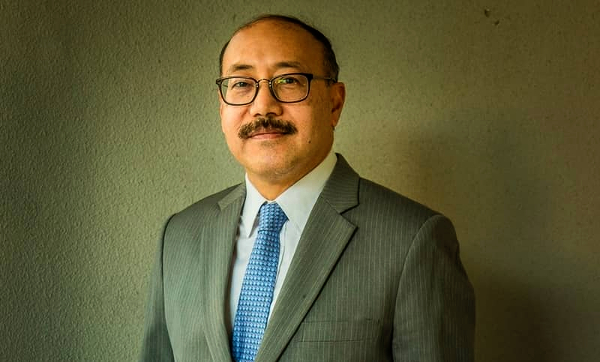Harsh Vardhan Shringla, the 1984 batch Indian Foreign Service batch officer who was behind last year’s “Howdy Modi” event in Houston, took charge as the new foreign secretary, succeeding Vijay Gokhale.
Shringla, 57, who will serve for a two-year term, will be India’s highest-ranking officer in the Ministry of External Affairs (MEA) at a time when New Delhi faces a wide range of foreign policy challenges.
Speaking to reporters before taking charge, Shringla, a graduate of Delhi’s prestigious St. Stephen’s College, said: “I am as committed to the ministry’s role in nation-building as I was almost 36 years ago when I entered these portals as a young professional.”
The career diplomat, whose last posting was as India’s envoy to the United States, said he “looked forward to functioning under the guidance of the Prime Minister and the External Affairs Minister”.
Shringla, working alongside Foreign Minister S Jaishankar, himself a former diplomat, will have to hit the ground running as New Delhi formulates and fine-tunes its strategies to deal with these foreign policy challenges:
1) Kashmir
While New Delhi has made it clear to the big powers, including the US and the EU, that ending the special status of Jammu and Kashmir is India’s internal matter, the continuing detention of Kashmiri leaders, including three former chief ministers, and the restrictions on communications in Kashmir, are issues increasingly being raised in world capitals.
2) Citizenship Amendment Act
Again, New Delhi insists that this is an internal matter, but the issue has repeatedly come up in global institutions. The European Parliament, for instance, is expected to discuss as many as six resolutions linked to the CAA and Kashmir.
3) China
China continues to poke India by repeatedly raising Kashmir at the United Nations, and testing New Delhi’s resolve along the Line of Actual Control. With its per capita GDP five times that of India’s and a rapidly expanding military, China poses a long-term challenge.
4) South Asia
The fallout of the CAA will also be felt in South Asia. In particular, Sheikh Hasina’s government in Bangladesh, a friend of India, has sent some subtle signals that it is not entirely happy with how CAA-NRC is playing out domestically in India. Bangladesh, of course, is one of the countries where India’s CAA applies, which effectively means that New Delhi officially believes that non-Muslims have been persecuted there.
5) United States
While trade-related differences with the US are not insurmountable, India will have to do a balancing act when it comes to Iran. But with the US presidential elections due later this year, the MEA could face a more aggressive Donald Trump in the next few months, especially when it comes to trade.
Source : Timesnow
Image Courtesy: DailySun
You may also like
-
IAF Aircraft Set Course For Exercise Eastern Bridge VII At Oman
-
India-us Working Together In Areas Like Critical Minerals, Supply Chains And Advanced Technologies: Shri Piyush Goyal
-
Defence Secretary to co-chair 5th India-Philippines Joint Defence Cooperation Committee meeting in Manila
-
2nd India-Japan Finance Dialogue held in Tokyo on 6th September, 2024
-
Prime Minister, Shri Narendra Modi welcomes Crown Prince of Abu Dhabi
